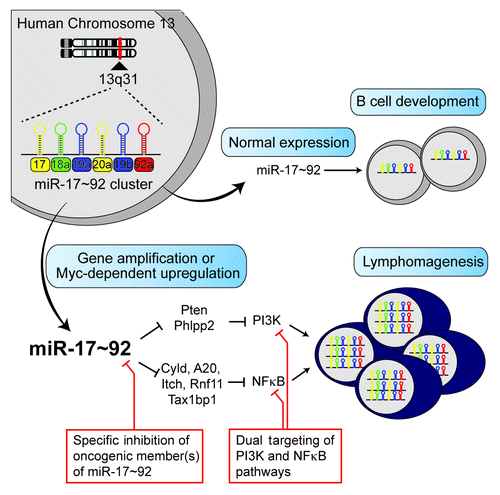Figures & data
Figure 1. A model for miR-17~92-driven lymphomagenesis and potential therapeutic approaches. The miR-17~92 cluster encodes for 6 distinct miRNAs, which fall into 4 miRNA families (miR-17, miR-18, miR-19, and miR-92 families) based on seed sequence (nucleotides 2–7) homology. miRNAs of the same color have identical seed sequences. Under physiological conditions, miR-17~92 plays an essential role in B-cell development. Gene amplification or Myc-mediated transcriptional upregulation causes miR-17~92 overexpression, which drives lymphomagenesis by inhibiting multiple negative regulators of the PI3K and NFκB pathways. Here we propose 2 approaches (red boxes) to treat miR-17~92-driven lymphomas: specific inhibition of oncogenic member(s) of miR-17~92 and dual targeting of PI3K and NFκB pathways.

